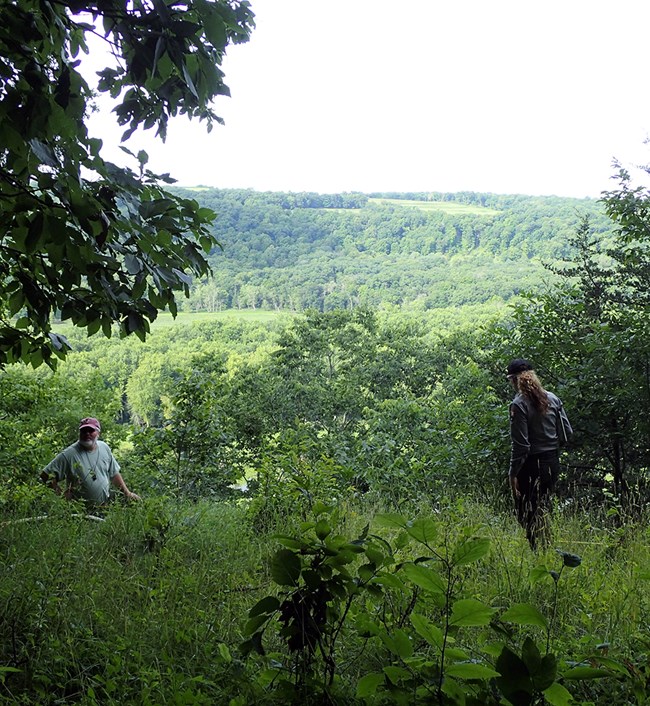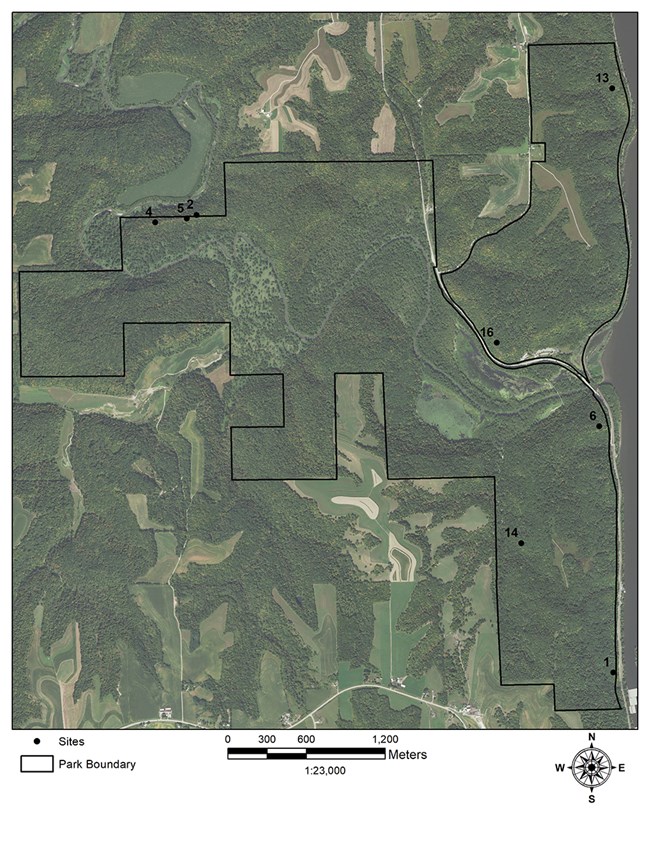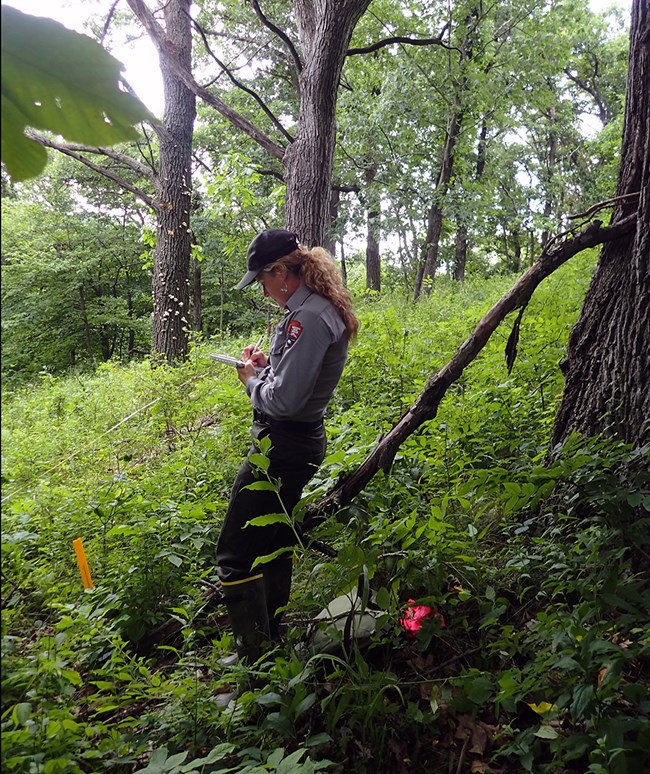Last updated: August 17, 2021
Article
Goat Prairie Monitoring at Effigy Mounds National Monument

NPS
What Are Goat Prairies?
Goat prairies are a unique kind of plant community found on southwest facing sides of bluff edges where soils are shallow and limestone or sandstone rock appear at the ground surface. They are also called oak openings, juniper glades, or hill prairies. Oak and juniper trees are typically scattered across goat prairies and a wide variety of plants found in prairies, savannas, and woodlands grow in these communities. Goat prairies and other unique and diverse plant communities can be found at Effigy Mounds National Monument because of its geology, history, and location along the Mississippi River.
Historically, fires prevented trees from growing and this helped maintain the open character of goat prairies at the park. More recently, in the absence of environmental disturbance like fire, trees have encroached on these areas and goat prairies may be transitioning towards deciduous forests. Tracking changes in plants along with information on fire history and weather can help the park target management actions that will help conserve these special goat prairie plant communities.

NPS
Goat Prairie Monitoring
The Heartland Inventory and Monitoring Network began monitoring goat prairies at Effigy Mounds National Monument in 1997. Eight permanent plots were set up in 1997 and 2001. We measure how closed the tree canopy is, how many plant species are present, and how much ground area each species covers (a measure called plant cover that helps us understand how abundant each species is). Using data in the years that we monitored all eight of these plots (2001, 2005, and 2017), we looked at plant trends over time. We also compared these data to information on weather and fire history at goat prairie sites to help us understand the patterns that we are finding.
Status of Goat Prairies 2001–2017
Fire and Weather
The fire record for Effigy Mounds National Monument indicated that very little fire occurred in the eight goat prairie sites during this time period. Weather data showed that conditions were normal to wet for this time period except for in one year.
NPS
Trees
There were more trees than expected in the goat prairies, but each site was unique. Across the sites, we found 24 tree species and oaks were dominant. The tree canopy was more closed (80% closed) in 2005 and 2017 than in 2001. This suggests that the goat prairies are transitioning to forests. Tree basal area also increased over time. Basal area is a measure of how much area tree stems or trunks occupy. The number of snag trees (dead trees) were similar through time for small trees, but there was an increase in large snag trees over time. This indicates that more trees were productive to old age.
Ground Flora
The ground flora (the array of low-growing plants) was also unique for each goat prairie. The number of species in each site decreased, but the total number of species for all sites together increased over time. This tells us that each of the goat prairies may be adapting in their own ways and becoming different from each other. Most goat prairie plant species were native to the area, but there were a few nonnative plants.

NPS
Maintaining Goat Prairies
The goat prairies at the park are resilient but are slowly progressing towards deciduous forest. The shallow soils in goat prairies slows tree production and the unique position on bluff edges maintains sunlight for prairie and savanna plants. However, goat prairies would benefit from management that reduces tree cover. Tree thinning through cutting and/or prescribed fire will help conserve these unique places.
For More Information
View the Full Report.
